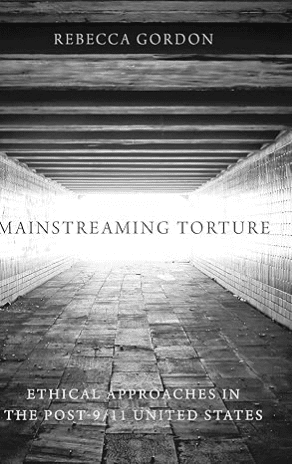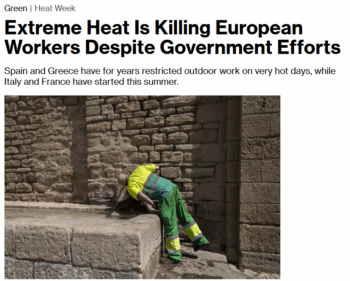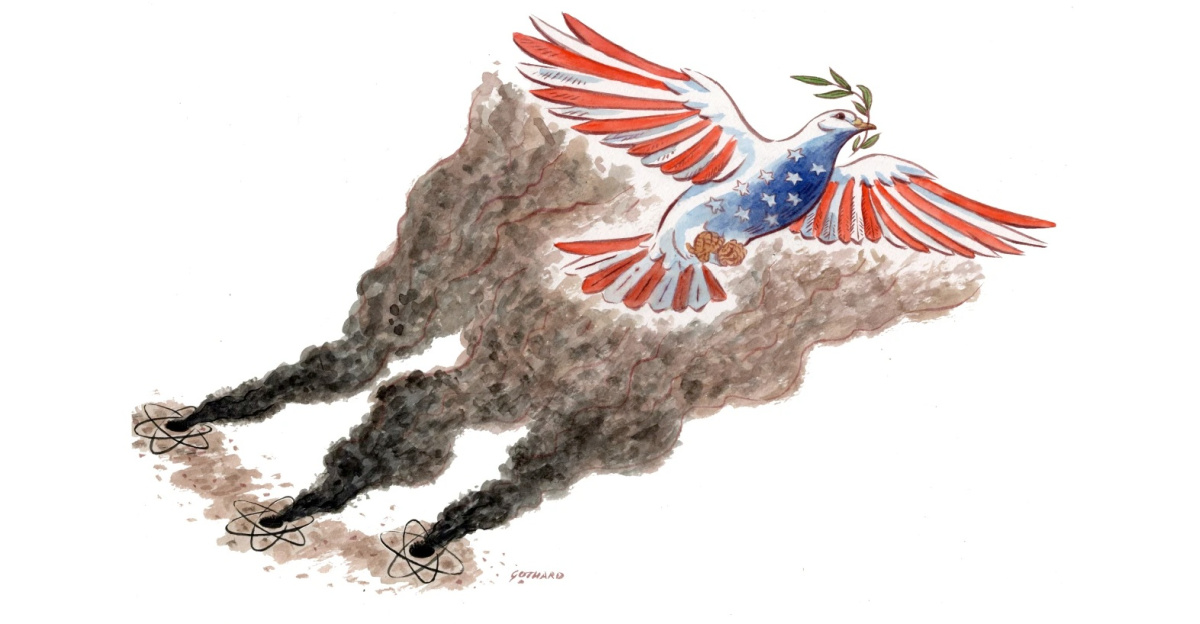
Surveillance
The United surveillance States of America
Originally published: Countercurrents on June 24, 2025 by Rebecca Gordon (more by Countercurrents) | (Posted Jun 26, 2025)
Sometime in the late 1980s, I was talking with a friend on my landline (the only kind of telephone we had then). We were discussing logistics for an upcoming demonstration against the Reagan administration’s support for the Contras fighting the elected government of Nicaragua. We agreed that, when our call was done, I’d call another friend, “Mary,” to update her on the plans. I hung up.
But before I could make the call, my phone rang.
“Hi, this is Mary,” my friend said.
“Mary! I was just about to call you.”
“But you did call me,” she said.
“No, I didn’t. My phone just rang, and you were on the other end.”
It was pretty creepy, but that was how surveillance worked in the days of wired telephone systems. Whoever was listening in, most likely someone from the local San Francisco Police Department, had inadvertently caused both lines to ring, while preparing to catch my coming conversation with Mary. Assuming they’d followed the law, arranging such surveillance would have involved a number of legal and technical steps, including securing a wiretapping warrant. They’d have had to create a physical connection between their phones and ours, most likely by plugging into the phone company’s central office.
Government surveillance has come a long way since then, both technically and in terms of what’s legally possible in Donald Trump’s United States and under the John Roberts Supreme Court.
All the President’s Tech
Government agencies have many ways of keeping tabs on us today. The advent of cellular technology has made it so much easier to track where any of us have been, simply by triangulating the locations of the cell towers our phones have pinged along the way.
If you watch police procedurals on television (which I admit to doing more than is probably good for me), you’ll see a panoply of surveillance methods on display, in addition to cellular location data. It used to be only on British shows that the police could routinely rely on video recordings as aids in crime-solving. For some decades, the Brits were ahead of us in creating a surveillance society. Nowadays, though, even the detectives on U.S. shows like Law and Order SVU (heading for its 27th season) can usually locate a private video camera with a sightline to the crime and get its owner to turn over the digital data.
Facial recognition is another technology you’ll see on police dramas these days. It’s usually illustrated by a five-second interval during which dozens of faces appear briefly on a computer monitor. The sequence ends with a final triumphant flourish–a single face remaining on screen, behind a single flashing word:
MATCH.
I have no idea whether the TV version is what real facial recognition software actually looks like. What I do know is that it’s already being used by federal agencies like Immigration and Customs Enforcement (ICE) and the FBI, under the auspices of a company called Clearview, which is presently led by Hal Lambert, a big Trump fundraiser. As Mother Jones magazine reports, Clearview has “compiled a massive biometric database” containing “billions of images the company scraped off the Internet and social media without the knowledge of the platforms or their users.” The system is now used by law enforcement agencies around the country, despite its well-documented inability to accurately recognize the faces of people with dark skin.

Mainstreaming Torture: Ethical Approaches in the Post-9/11 United States
The old-fashioned art of tailing suspects on foot is rapidly giving way to surveillance by drone, while a multitude of cameras at intersections capture vehicle license plates. Fingerprinting has been around for well over a century, although it doesn’t actually work on everyone. Old people tend to lose the ridges that identify our unique prints, which explains why I can’t reliably use mine to open my phone or wake my computer. Maybe now’s my moment to embark on a life of crime? Probably not, though, as my face is still pretty recognizable, and that’s what the Transportation Safety Administration uses to make sure I’m really the person in the photo on my Real ID.
The second Trump administration is deploying all of these surveillance methods and more, as it seeks to extend its authoritarian power. And one key aspect of that project is the consolidation of the personal information of millions of people in a single place.
One Database to Rule Them All
It’s been thoroughly demonstrated that, despite its name, Elon Musk’s Department of Government Efficiency has been anything but efficient in reducing “waste, fraud, and abuse” in federal spending. DOGE, however, has made significantly more progress in achieving a less well publicized but equally important objective: assembling into a single federal database the personal details of hundreds of millions of individuals who have contact with the government. Such a database would combine information from multiple agencies, including the IRS and the Social Security Administration. The process formally began in March 2025 when, as the New York Times reported, President Trump signed an executive order “calling for the federal government to share data across agencies.” Such a move, as Times reporters Sheera Frenkel and Aaron Krolik note, raises “questions over whether he might compile a master list of personal information on Americans that could give him untold surveillance power.”
In keeping with the fiction that DOGE’s work is primarily focused on cost-cutting, Trump labeled his order “Stopping Waste, Fraud, and Abuse by Eliminating Information Silos.” That fiction provided the pretext for DOGE’s demands that agency after agency grant its minions free access to the most private data they had on citizens and non-citizens alike. As the Washington Post reported in early May:
The U.S. DOGE Service is racing to build a single centralized database with vast troves of personal information about millions of U.S. citizens and residents, a campaign that often violates or disregards core privacy and security protections meant to keep such information safe, government workers say.
Worse yet, it will probably be impossible to follow DOGE’s trail of technological mayhem. As the Post reporters explain:
The current administration and DOGE are bypassing many normal data-sharing processes, according to staffers across 10 federal agencies, who spoke on the condition of anonymity out of fear of retribution. For instance, many agencies are no longer creating records of who accessed or changed information while granting some individuals broader authority over computer systems. DOGE staffers can add new accounts and disable automated tracking logs at several Cabinet departments, employees said. Officials who objected were fired, placed on leave or sidelined.
My own union, the American Federation of Teachers, joined a suit to prevent DOGE from seizing access to Social Security data and won in a series of lower courts. However, on May 31st, in a 6-3 ruling, the Supreme Court (with the three liberal judges dissenting) temporarily lifted the block imposed by the lower courts until the case comes back to the justices for a decision on its merits. In the meantime, DOGE can have what it wants from the Social Security Administration. And even if the Supreme Court were ultimately to rule against DOGE, the damage will be done. As the president of El Salvador said in response to an entirely different court ruling,
Oopsie. Too late.
Musk’s Pal Peter Thiel–and Palantir
Anyone who’s ever worked with a database, even one with only a few thousand records, knows how hard it is to keep it organized and clean. There’s the problem of duplicate records (multiple versions of the same person or other items). And that’s nothing compared to the problem of combining information from multiple sources. Even the names of the places where data goes (“fields”) will differ from one base to another. The very structures of the databases and how records are linked together (“relationships”) will differ, too. All of this makes combining and maintaining databases a messy and confusing business. Now imagine trying to combine dozens of idiosyncratically constructed ones with information stretching back decades into one single, clean, useful repository of information. It’s a daunting project.
And in the case of Trump’s One Big Beautiful Database, that’s where Peter Thiel’s company Palantir comes in. As the New York Times reported recently, at the urging of Elon Musk and DOGE, Trump turned to Palantir to carry out the vision expressed in his March executive order mentioned above. In fact, according to the Times, “at least three DOGE members formerly worked at Palantir, while two others had worked at companies funded by Peter Thiel, an investor and a founder of Palantir.”
Palantir, named for the “seeing stones” described in J.R.R. Tolkien’s Lord of the Rings, is already at work, providing its data platform Foundry to several parts of the government. According to the Times:
The Trump administration has expanded Palantir’s work across the federal government in recent months. The company has received more than $113 million in federal government spending since Mr. Trump took office, according to public records, including additional funds from existing contracts as well as new contracts with the Department of Homeland Security and the Pentagon. (This does not include a $795 million contract that the Department of Defense awarded the company last week, which has not been spent.)
Representatives of Palantir are also speaking to at least two other agencies–the Social Security Administration and the Internal Revenue Service–about buying its technology, according to six government officials and Palantir employees with knowledge of the discussions.
Who is Peter Thiel, Palantir’s co-founder? In addition to being a friend of Musk’s, Thiel was an early Trump supporter among the tech elites of Silicon Valley, donating $1.25 million to his 2016 campaign. He is also credited with shaping the political career of Vice President J.D. Vance, from his campaign to become a senator to his selection as Trump’s running mate. Thiel is part of a rarified brotherhood of tech and crypto-currency billionaires who share a commitment to a particular project of world domination by a technological elite. (And if that sounds like the raw material for a crazy conspiracy theory, bear with me again here.) Thiel was also an early funder of Clearview, the facial recognition software mentioned earlier.
In hiring Palantir and turning our data over to the company, Trump makes himself a useful tool, along with Vance, in the service of Thiel’s vision–just as he has been to the machinations of Project 2025’s principal author Russell Vought, who has different, but no less creepy dreams of domination.
The Dark Enlightenment
Thiel and his elite tech bros, including Musk, Internet pioneer and venture capitalist Marc Andreessen, and Clearview founder Hoan Ton-That share a particular philosophy. Other believers include figures like fervent Trump supporter Steve Bannon and Vice President Vance. This explicitly anti-democratic worldview goes by various names, including the “neo-reactionary movement” and the “Dark Enlightenment.”
Its founder is a software developer and political blogger named Curtis Yarvin, who has advocated replacing a “failed” democratic system with an absolute monarchy. Describing the Dark Enlightenment in the Nation magazine in October 2022, Chris Lehman observed that, in his run for Senate, J.D. Vance had adopted “a key plank of [Yarvin’s] plan for post-democratic overhaul–the strongman plan to ‘retire all government employees, which goes by the jaunty mnemonic ‘RAGE.’” (Any similarity to Musk’s DOGE is probably not coincidental.)
So, what is the Dark Enlightenment? It’s the negative image of an important intellectual movement of the seventeenth and eighteenth centuries, the Enlightenment, whose principles formed, among other things, the basis for American democracy. These included such ideas as the fundamental equality of all human beings, the view that government derives its authority from the consent of the governed, and the existence of those “certain unalienable rights” mentioned in the U.S. Declaration of Independence.
The Dark Enlightenment explicitly opposes all of those and more. Lehman put it this way: “As Yarvin envisions it, RAGE is the great purge of the old operating system that clears the path for a more enlightened race of technocrats to seize power and launch the social order on its rational course toward information-driven self-realization.” That purge would necessarily produce “collateral casualties,” which would include “the nexus of pusillanimous yet all-powerful institutions Yarvin has dubbed ‘the Cathedral’–the universities, the elite media, and anything else that’s fallen prey to liberal perfidy.” Of course, we’ve already seen at least a partial realization of just such goals in Trump’s focused attacks on universities, journalists, and that collection of values described as diversity, equity, and inclusion.
On that last point, it should be noted that Yarvin and his followers also tended to be adherents of an “intellectual” current called “human biological diversity” championed by Steven Sailer, another Yarvin acolyte. That phrase has been appropriated by contemporary proponents of what used to be called eugenics, or scientific racism. It’s Charles Murray’s 1994 pseudo-scientific Bell Curve dressed up in high-flown pseudo-philosophy.
However, there’s more to the Dark Enlightenment than authoritarianism and racism. One stream, populated especially by Thiel and other tech bros, has an eschatology of sorts. This theology of the Earth’s end-times holds that elite humans will eventually (perhaps even surprisingly soon) achieve eternal life through physical communion with machines, greatly augmenting their capacities through artificial intelligence. That’s important to them because they’ve given up on the Earth. This planet is already too small and used up to sustain human life for long, they feel. Hence, our human destiny is instead to rule the stars. This is the theology underlying Elon Musk’s hunger for Mars. Anything that stands in the way of such a destiny must and shall be swept away on the tide of a tech bros future. (For an excellent explication of the full worldview shared by such would-be masters of the rest of us–and the rest of the universe as well–take a look at Adam Becker’s new book, More Everything Forever: AI Overlords, Space Empires, and Silicon Valley’s Crusade to Control the Fate of Humanity.)
Surveillance Everywhere?
Back in my own corner of the world, the San Francisco Police Department has come a long way since those ancient days of clumsy phone-tapping. Recently, a cryptocurrency billionaire, Chris Larsen, gave the SFPD $9.4 million to upgrade its surveillance tech. They’ll use the money to outfit a new Real Time Investigation Center (RTIC) with all the latest toys. “We’re going to be covering the entire city with drones,” claimed RTIC representative Captain Thomas MacGuire. Imagine my joyful anticipation!
How should defenders of democracy respond to the coming reality of near-constant, real-time government surveillance? We can try to shrink and hide, of course, but that only does their job for them, by driving us into a useless underground. Instead, we should probably live as if everything we do, even in supposedly “secure” places (real and virtual), is visible to the Trump regime. Our response must be to oppose Trump’s onrushing version of American fascism as boldly and openly as we can. Yes, some of us will be harassed, imprisoned, or worse, but ultimately, the only answer to mass surveillance by those who want to be our overlords is open, mass defiance.
https://mronline.org/2025/06/26/the-uni ... f-america/

































